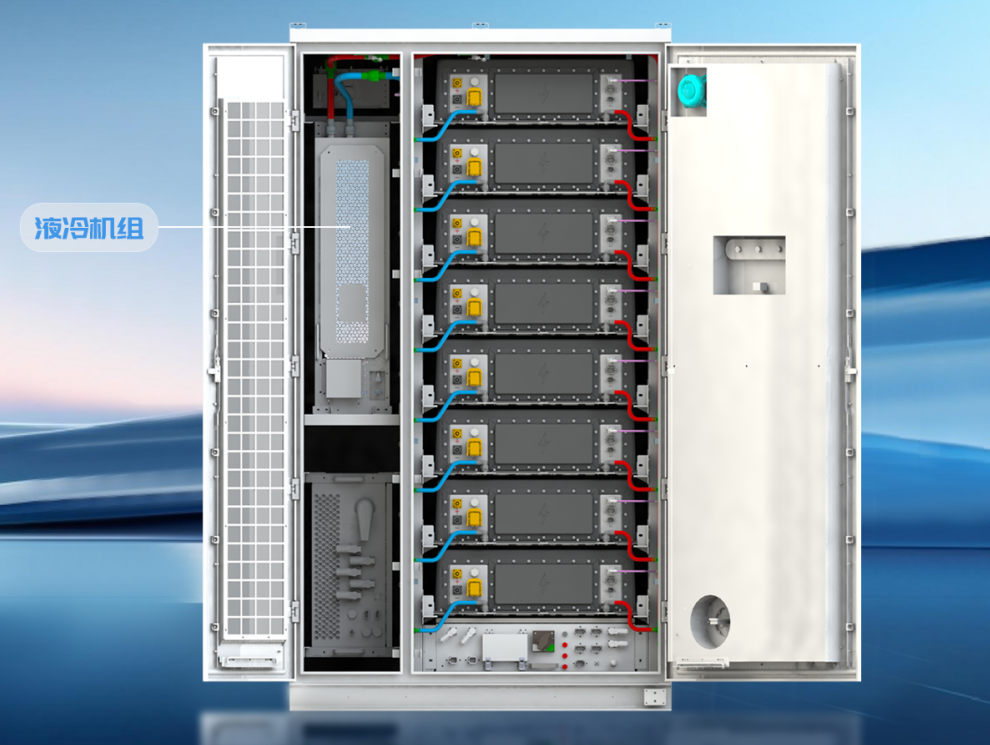Liquid Cooling Technology: An Efficient Solution for Cooling Energy Storage Systems
With the vigorous development of the power storage market, electrochemical energy storage as a core link, its safety and efficiency has become the focus of attention in the industry. Especially in the high temperature environment, the risk of thermal runaway of the battery cell increases significantly, which not only affects the performance of the energy storage system, but also may pose a threat to the safe operation of the power station. Therefore, it is urgent to solve the risk of thermal runaway of the battery cell and cool down the energy storage system.
At present, the thermal management methods in the field of energy storage generally include air-cooled heat dissipation and liquid-cooled heat dissipation. Liquid cooling technology directly dissipates heat through liquid convection, providing accurate and uniform temperature control to the battery, ensuring stable operation of the battery pack. With its excellent heat dissipation performance, liquid cooling technology has gradually become the dominant cooling method in medium and high power scenarios.

Principle of liquid cooling heat dissipation
The heat dissipation of the liquid cooling energy storage system is mainly completed by the liquid cooling unit, which is composed of circulating pumps, compressors, heat sinks, fans, etc., usually using 50% glycol solution as the heat conduction medium, through the direct or indirect contact between the coolant and the heating parts, efficiently take away the heat to ensure that the battery runs in the ideal working temperature. Specifically, liquid cooling technology mainly realizes system cooling from the following aspects:
1 Coolant circulation
Use a liquid cooling medium with high heat capacity and good heat transfer performance, such as water, glycol mixture or special coolant. The coolant is circulated through the system through a circulating pump to ensure continuous heat transfer.
2 Heat exchanger
The coolant directly absorbs the heat generated by the battery through a cold plate or cooling tube built into the battery module or tightly fitted to the surface of the battery module. In order to increase the heat transfer area and improve the heat transfer efficiency, cold plates and cooling tubes are usually made of high thermal conductivity materials (such as copper or aluminum). The heat absorbed by the coolant will flow to the radiator for release. These radiators usually have a fan, which can effectively improve the heat dissipation efficiency.
3 Temperature monitoring and control
Temperature sensors installed in the battery module and coolant line monitor temperature changes in real time, and the control system EMS adjusts the flow rate of the circulating pump and the speed of the radiator fzan according to the temperature sensor data to optimize cooling effect and energy saving.
4 Closed system design
To prevent leakage and contamination, the coolant is circulated in a closed piping system. At the same time, an expansion tank is usually designed in the system to adjust the volume change of the coolant and maintain the pressure stability of the system.
Liquid cooling advantage
Liquid cooling technology can achieve the accuracy of temperature control and uniformity of cooling, and has the outstanding advantages of efficient heat dissipation, good temperature uniformity and low noise.
1 Efficient heat dissipation
Designed for applications with high power density and high heat flux, the liquid cooling system uses a liquid circulation cooling mechanism to efficiently remove the heat generated by the battery, ensuring that the battery operates at a consistently stable and low temperature range. Through liquid cooling heat dissipation, it can not only effectively reduce the temperature difference between each battery unit, but also greatly promote the consistency and stability of battery performance, and largely avoid the deterioration of battery performance caused by uneven temperature.
2 Good temperature uniformity
Liquid cooling technology can evenly distribute the coolant between the batteries to achieve uniform heat dissipation and maintain the same temperature in the battery pack. This uniform temperature distribution helps extend battery life and improve the overall performance of the energy storage system.
3 Low heat dissipation noise
The liquid cooled energy storage system realizes accurate temperature control of the energy storage device by introducing a circulating liquid cooling medium, and does not need to rely on the fan on the battery pack to generate air flow for heat dissipation, thus avoiding the noise caused by fan rotation. Therefore, the liquid cooled energy storage system has low noise during operation and is suitable for noise sensitive environments.
With its excellent thermal management performance, liquid cooling technology has become an important technology to ensure the efficient and safe operation of energy storage systems. With the continuous innovation and breakthrough of liquid cooling technology, electric energy storage will usher in more prosperous and broad development prospects, and inject new vitality into the sustainable development of the energy industry.

